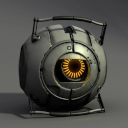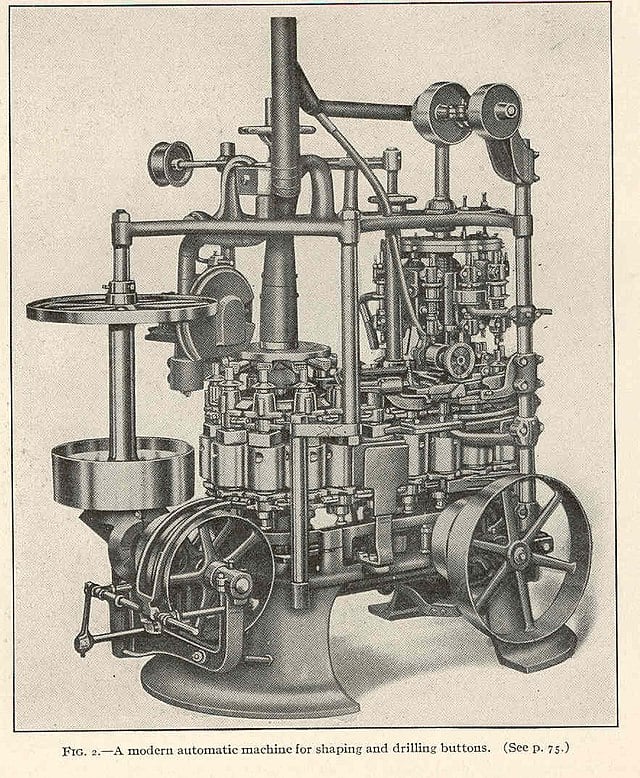…And it’s bound to be stupidly expensive.
Wish I could afford 20 of them, but not without winning the Powerball.
i don’t mind that, if it means that lower capacity drives will get cheaper
20 of them? Just curious, how would you use 800 or 1600 TB of storage?
A mirror of Anna’s Archive.
Information is meant to be free.
Oh wow. Riveting
CAN WE PLEASE JUST GET 3.5" SSDS. PLEASE
Best I can do is a 3.5’’ inch SATA to USB adapter case with one of these tiny SSDs glued in
Don’t forget to include the hacked controller firmware that reports the drive size as triple what it actually is.
Triple? That’d rookie numbers.
My manager ordered four “4TB” external SSDs from AliExpress a few weeks back. He paid £60 total for them, delivered.
My Sus alarm started clanging, so I grabbed one off him and ran some tests on it.
After a couple of days of the tests chuntering along, I ended up reasonably convinced that they’re - at most - 40GB. And even at that capacity they’re useless, transferring at around 10MB/s
I know right. Why is this not a thing already? I mean I understand the various U.2, U.3, and EDSFF are great for high density data center installs. We have a 1U box in production that could be as high as 1 PB given current densities with E1.L drives but that’s enterprise level stuff. I just want a huge 3.5 SSD I could put in these pro-consumer level NAS boxes or maybe even one I could build myself for my home lab.
Thru exist but they’re all several hundred dollars and 480 GB for some reason.
I have a few 960GB (ish? can’t remember exact size) 2.5in at work that are almost useless.
Yeah, why aren’t there any?
There are: https://nimbusdata.com/products/exadrive/specifications/
They are just not listed in shops for poor people. (joking)
Aren’t a lot of the 2.5" ones already empty space?
How big, and how expensive, would a 3.5" SSD be, if it actually filled enough of the space with NAND chips for the form factor to be warranted?
Well, Kioxia sells a 30TB 2.5in SSD right now for about $5k. I’m sure they could make a 60+TB SSD by just stacking 2 of them in a 3.5in case.
I feel like heat would start to become a serious issue at that point.
cool 50tb. i can now download more stuff.
If EA or Ubisoft don’t get their shit together this won’t be enough.
i can finally seed every spn season
Hope you have a database for file management at that point.
You thought 50TB was it? LOL! Hold on to your butts because 53.713TB SSDs are coming! These will cost you all your vital organs at 35years of age. Brains included.
If 50TB is coming fast, then so am I
Can’t wait to see how these 40 TB hard drives, a wonderment of technology, will be used to further shove AI down my throat.
Oh wow does it come with glowing green computery looking stuff like in the picture
The image is literally just the proprietary xbox drive plugged into an xbox
I had an Xbox and it didn’t do that either!!!
I do like that the picture on an article about a 40 TB drive is clearly labelled as 1 TB. Like couldn’t they have edited the image?
I’ve been buying computer stuff for like 30 years and never once has any of it had any weird glowing stuff like on the box
Yeah but it’s not hovering or rotating unsupported in the air. The box said it was going to do that stuff. I’m pretty sure this doesn’t even have any weird runes on it either
You need to be getting the radon infused versions.
We seem to be headed in that direction though. My most recent motherboard has built in LEDs for no practical reason other than “ooh shiny”. Took me a minute to find the UEFI setting to disable that. “Stealth mode” apparently.
It’s also increasingly difficult, if not impossible, to find wired mice, keyboards and headsets in that ever-increasing gulf between “all singing, all dancing, expensive gaming device full of unnecessary LEDs” and “cheap, awful, bare minimum”. If it plugs in and there’s a 5v rail nearby, gotta draw on that to be shiny! Anything else would be sacrilege!
I want everything wired, antennas and batteries usually don’t make that stuff any better
deleted by creator
You do realize that there is probably a fair chunk of people on here who can say that unironically?
I’ve only got 32tb in the family Raid 5 (actually 24TB since I lose a drive to parity), but my girl really loves her trash TV while she works so we’re on like 90% full.
And I’m just a podunk machinist.
That’s pretty impressive a couple of those and you could probably download the next Call Of Duty.
Having been burned many times in the past, I won’t even trust 40 GB to a Seagate drive let alone 40 TB.
Even in enterprise arrays where they’re basically disposable when they fail, I’m still wary of them.
Same. Between work and home, I’ve had ~30 Seagate drives fail after less than a year. I stopped buying them for personal use many years ago, but work still insists, because they’re cheaper. I have 1TB WD Black drives that are over ten years old and still running. My newest WD Black drive is a 6TB, and I’ve had it for seven years. I dunno if WD Black is still good, but that’s the first one I’ll try if I need a new drive.
It’s always worth paying more for Western Digital.
My first seagate HD started clicking as I was moving data to it from my older drive just after I purchased it. This was way back in the 00s. In a panic, I started moving data back to my older hd (because I was moving jnstead of copying) and then THAT one started having issues also.
Turns out when I overclocked my CPU I had forgotten to lock the PCI bus, which resulted in an effective overclock of the HDD interfaces. It was ok until I tried moving mass amounts of data and the HDD tried to keep up instead of letting the buffer fill up and making the OS wait.
I reversed the OC and despite the HDDs getting so close to failure, both of them lasted for years after that without further issue.
Still, it’s a good thing if it means energy savings at data centers.
For home and SMB use there’s already a notable absence of backup and archival technologies to match available storage capacities. Developing one without the other seems short sighted.
I still wonder, what’s stopping vendors from producing “chonk store” devices. Slow, but reliable bulk storage SSDs.
Just in terms of physical space, you could easily fit 200 micro SD cards in a 2.5" drive, have everything replicated five times and end up with a reasonably reliable device (extremely simplified, I know).
I just want something for luke-warm storage that didn’t require a datacenter and/or 500W continuous power draw.
they make bulk storage ssds with QLC for enterprise use.
The reason why they’re not used for consumer use cases yet is because raw nand chips are still more expensive than hard drives. People dont want to pay $3k for a 50tb SSD if they can buy a $500 50tb hdd and they don’t need the speed.
For what it’s worth, 8tb TLC pcie3 U.2 SSDs are only $400 used on ebay these days which is a pretty good option if you’re trying to move away from noisy slow hdds. 4 of those in raid 5 plus a diy nas would get you 24tb of formatted super fast nextcloud/immich storage for ~$2k.
I can’t place why, but the thought of used enterprise SSDs still sketches me out more than HDDs. Maybe it’s just that I only ever think of RAID in terms of hard drives, paired with a decade+ of hearing about SSD reliability issues, which are very different from the more familiar problems HDDs can have.
The power and noise difference makes it more appealing to me, moreso than the speed, personally. Maybe when consumer bottom-barrel SSDs get a little better I could be convinced into RAIDing a bunch of them and hoping one cold spare is enough.
EDIT: I can acquire new ~200$ 4TB Orico branded drives where I am relatively easily. Hm.
Flash drives are much worse than hard drives for cold storage. The charge in flash will leak.
If you want cheap storage, back it up to another drive and unplug it.
Cost. The speed of flash storage is an inherent quality and not something manufacturers are selecting for typically. I assure you if they knew how to make some sort of Super MLC they absolutely would.
It’s not inherent in terms of “more store=more fast”.
You could absolutely take older, more established production nodes to produce higher quality, longer lasting flash storage. The limitation hardly ever is space, but heat. So putting that kind of flash storage, with intentionally slowed down controllers, into regular 2.5 or even 3.5" form factors should be possible.
Cost could be an issue because the market isn’t seen as very large.
Eh hard drives are archival storage these days. They are DOG SLOW and loud. Any real time system like Nextcloud should probably be using ssds these days.
Hard drives are also relatively cheap and fast enough for many purposes. My PCs use SSDs for system drives but HDDs for some data drives, and my NAS will use hard drives until SSDs become more affordable.
yeah i still use hard drives for storing movies, logs, and backups on my Nas cluster, but using it for nextcloud or remote game storage is too slow. I also live in an apartment and the scrubs are too loud. There’s only a 5:1 price premium, so it’s worth just going all flash unless you have like 30tb storage needs.
Same here. Been burned by SSD’s too though - a Samsung Evo Pro drive crapped out on me just months after buying it. Was under warranty and replaced at no cost, but I still lost all my data and config/settings.
Any disk can and will fail at some point in time. Backup is your best friend. Some sort of disk redundancy is your second best friend.
I feel the exact same about WD drives and I’m quite happy since I switched to Seagate.
Don’t look at Backblaze drive reports then. WD is pretty much all good, Seagate has some good models that are comparable to WD, but they have some absolutely unforgivable ones as well.
Not every Seagate drive is bad, but nearly every chronically unreliable drive in their reports is a Seagate.
Personally, I’ve managed hundreds of drives in the last couple of decades. I won’t touch Seagate anymore due to their inconsistent reliability from model to model (and when it’s bad, it’s bad).
Don’t look at Backblaze drive reports then
I have.
But after personally having suffered 4 complete disk failures of WD drives in less then 3 years, it’s really more like a “fool me once” situation.
It used to be pertinent to check the color of WD drives. I can’t remember all of them but of the top of my head I remember Blue dying the most. They used to have black, red and maybe a green model, now they have purple and gold as well. Each was designated for certain purposes / reliability.
Source: Used to be a certified Apple/Dell/HP repair tech, so I was replacing hard drives daily.
Gold is the enterprise ones. Black is enthusiast, blue is desktop, red is NAS, purple is NVR, green is external. Green you almost certainly don’t want (they do their own power management), red is likely to be SMR. But otherwise they’re not too different. If you saw a lot of blues failing, it’s probably because the systems you supported used blue almost exclusively.
I thought green was “eco.” At least the higher-end external ones tend to be red drives, which is famously why people shuck them to use internally because they’re often cheaper than just buying a red bare drive directly, for some reason.
Correct about the greens. They used to be (might still be) the ones that ran at a lower RPM
thats a lot of
pornhigh quality videos












